'Coups, schisms, near-death experiences': The scarcely believable 22-year development of a Morrowind mod older than the game itself
Tamriel Rebuilt has some stories to tell.
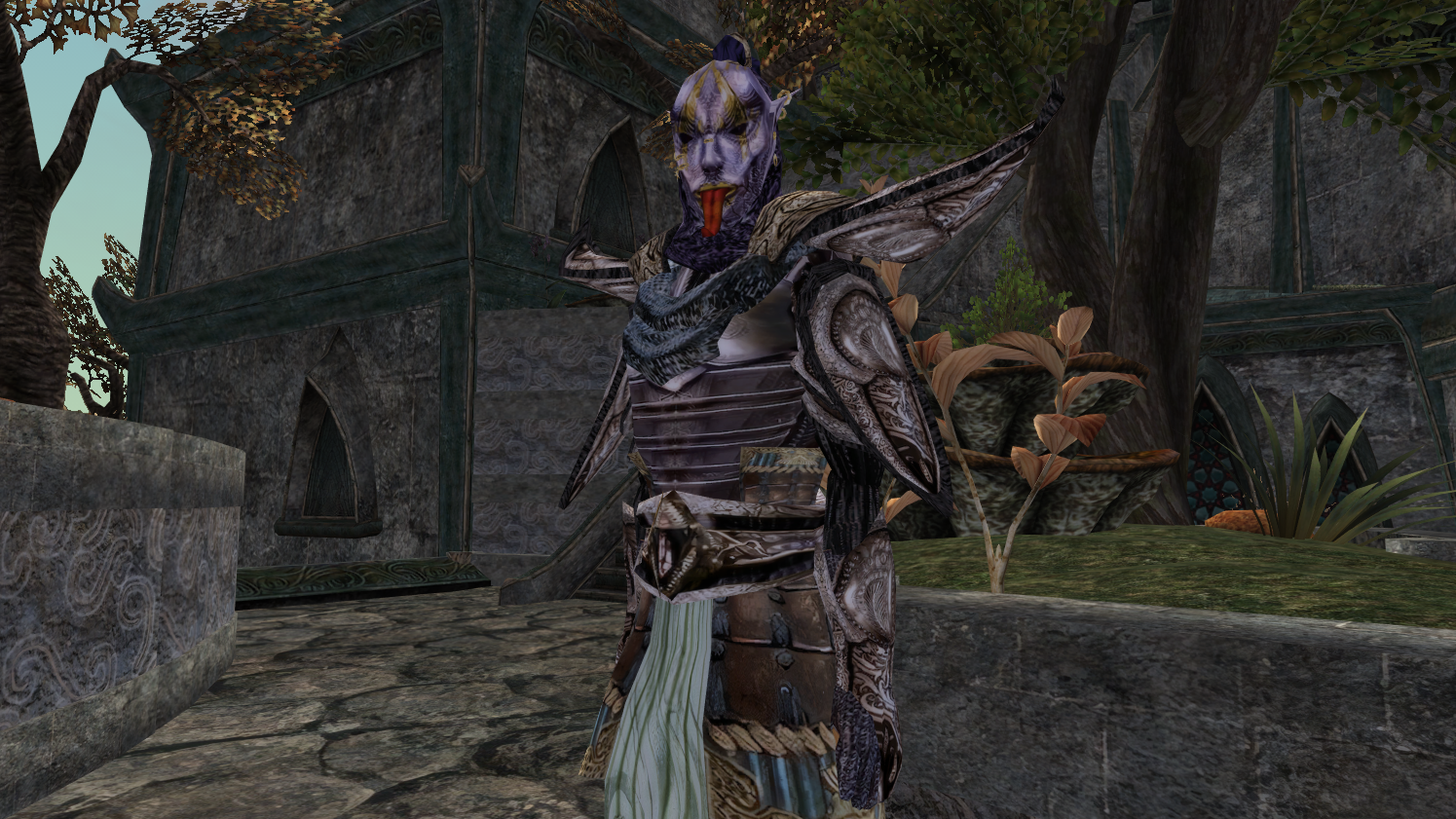
Not many mod projects have 122-page chronicles of their own history, but then not many mod projects are Tamriel Rebuilt, a mod for The Elder Scrolls 3: Morrowind whose aim is to, well, build Morrowind. The rest of it, I mean. Because in spite of the name, Morrowind doesn't actually contain its entire titular province.
Unlike Skyrim, the third Elder Scrolls restricts you to a relatively minor slice of its main setting: The volcanic backwater of Vvardenfell. Tamriel Rebuilt wants to fill in the gaps. It's been doing it, town by town, section by section, district by district, for over 20 years.
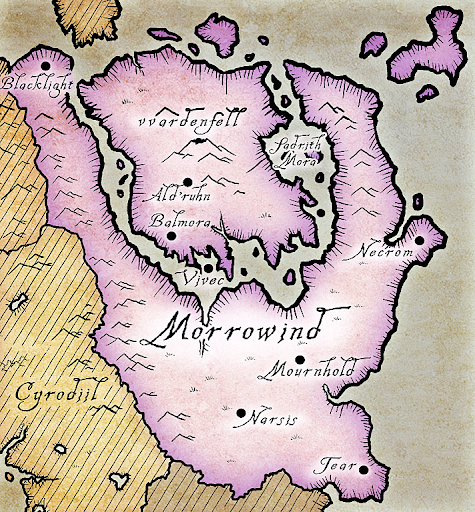
Lord knows there are enough ambitious mod projects for Elder Scrolls games to fill a hundred articles, but Tamriel Rebuilt has always seemed special to me. Its longevity, creativity, and intention to create the mainland of Morrowind "as Bethesda would have done it," as it was put to me, have always made it stand out. So, naturally, I decided to leverage my position as a PC Gamer writer to hassle the team about what it's like to work on a project that's somehow even older than the very old game it's modding.
Laying foundations
Paradoxically, Tamriel Rebuilt traces its origins back to before the actual launch of Morrowind. To November 14, 2001 to be exact, when a starry-eyed poster on The Elder Scrolls Forums, responding to a certain amount of fan disappointment at the announcement that TES 3 wouldn't feature all of Morrowind, pitched his fellow fans on the idea of rebuilding all of Tamriel in the then-upcoming game. That's the entire continent—including the settings of every TES game released thus far in 2023—if you're not up to date on your Bethesda naming conventions.
Ender wasn't the only one to pitch some kind of project aimed at building out the rest of Morrowind (and beyond), but—as Tamriel Rebuilt's own project history puts it—"his naive idea was the only one to survive". In a loose, disorganised way, a hard core of dedicated modders set about building Tamriel. The mod would only shift its focus to the relatively more reasonable goal of just finishing the province of Morrowind in 2009, after attempts to create the Redguard province of Hammerfell came to naught.
"The earliest history of TR was all about reeling from one crisis to another," Sultan of Rum—a name TR followers will recognise as the author of the project's myriad updates and news posts, and a kind of historian for the mod—tells me. "Every conceivable problem has arisen at some point or another during the mod’s two-decade lifespan. We’ve had coups, schisms, near-death experiences, years upon years of scrapped work, bad PR, scammers and impersonators—you name it".
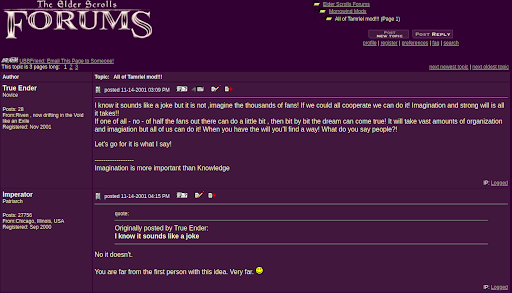
"The earliest history of TR was all about reeling from one crisis to another"
Sultan of Rum
It became apparent early on in the mod's lifespan that herding the cats of a volunteer modding community was a mammoth task all by itself. "Most of the problems" the project ran into back then "come down to being a fluid volunteer project that was run by teenagers for a large part of its existence and which had very little idea of effective management procedures or QA," says Sultan of Rum. "In early 2003 there was a crisis when TR discovered that if you just allow anyone to come claim a plot of land to work on, no matter what size or scope, the end result is gonna be a lot of ghosting and abandoned claims blocking further process".
Keep up to date with the most important stories and the best deals, as picked by the PC Gamer team.
"Most of the problems... come down to being a fluid volunteer project that was run by teenagers for a large part of its existence"
Sultan of Rum
This led to "probably the most dramatic crisis in TR's history" following an attempt by the mod's leadership to institute a "more refined claim system," the process by which modders could take responsibility for the development of particular bits of the mod. The result was an "escalating series of confrontations between the core team and several camps of developers with different opinions on how much the core team can and should direct and edit the work of individual developers". No one likes being told what to do, after all, especially young modders working on a volunteer basis.

Towerfall
At the centre of the dispute was Silgrad Tower, described by Sultan of Rum as "a huge early mod which had joined into TR in 2002 but that still operated almost as its own separate project and was very popular among the wider community". Issues arose when TR's "core developers" felt that Silgrad Tower's approach wasn't exactly in keeping with Morrowind's lore.
In Sultan of Rum's telling—and the telling of TR's own project history page—the result was civil war. On the one hand, TR's core developers were increasingly keen on centralising development direction so that work produced under the project's umbrella would feel like it could have come from Bethesda itself. On the other, plenty of modders with claims to this or that section of the Morrowind mainland rankled at what they saw as creative imposition.
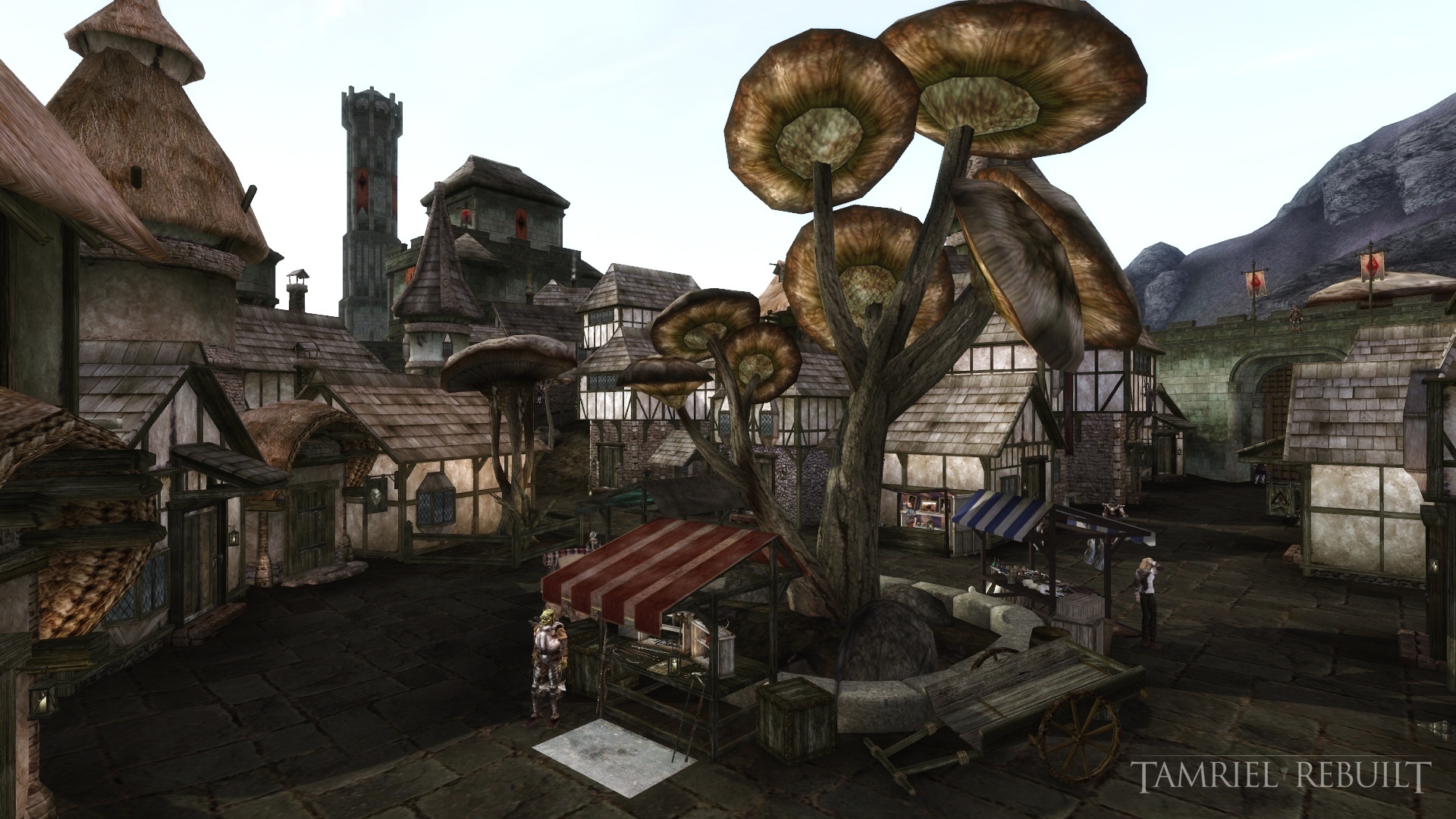
"It's tough to figure out exactly what happened," says Sultan of Rum who, despite an encyclopaedic knowledge of the project's history, only got involved in the mod in the late 2010s. The lack of surviving forum archives from the conflict lends attempts to piece together events the air of an archaeologist trying to trace the outline of the Bronze Age Collapse, but one thing is certain: "the two camps split".
Not only did they split, but TR's forums—hosted on the Silgrad Tower site and a hub for TR's organisation and history—ended up deleted in the conflict. TR had lost a lot of manpower and those devs that were left found themselves dispirited. Things looked grim. Moreover, the fracas "poisoned the larger TES community's perception of TR for many years," a perception which only recovered following the release of TR's first expansion in 2006. "It's hard to be angry at a dev team who has just freely released an expansion a quarter of the size of the original game," said Sultan.
Releasing something, anything, likely had a positive impact on dev spirits, too. A TR dev named Mark, who works mostly on the project's interior designs, told me that a major way the team keeps up its passion for a project old enough to drink alcohol is by actually putting out updates. "Enthusiasm comes from new releases," said Mark, "the PR draws in new developers and the community's excitement makes us excited as well." Putting out TR's first expansion five years after Ender's first post on the TES forums—and after a period of crisis, at that—must have felt very good indeed.
"It's hard to be angry at a dev team who has just freely released an expansion a quarter of the size of the original game"
Sultan of Rum
The Silgrad Tower furore might have been the biggest crisis in TR's history, but it was far from the only one. It was soon followed by a "soft coup" that saw TR's core old guard resign, replaced by a new core with radically different priorities, and that was followed years later by an event referred to—incredibly—as "the Great Self-Decapitation": A period wherein TR's "implement first, ask questions later" philosophy led to the team having to jettison thousands of hours of work on Almalexia, Morrowind's capital city. Almalexia had been under development for years, but it suffered from quality issues that afflicted a lot of the mod's older content.
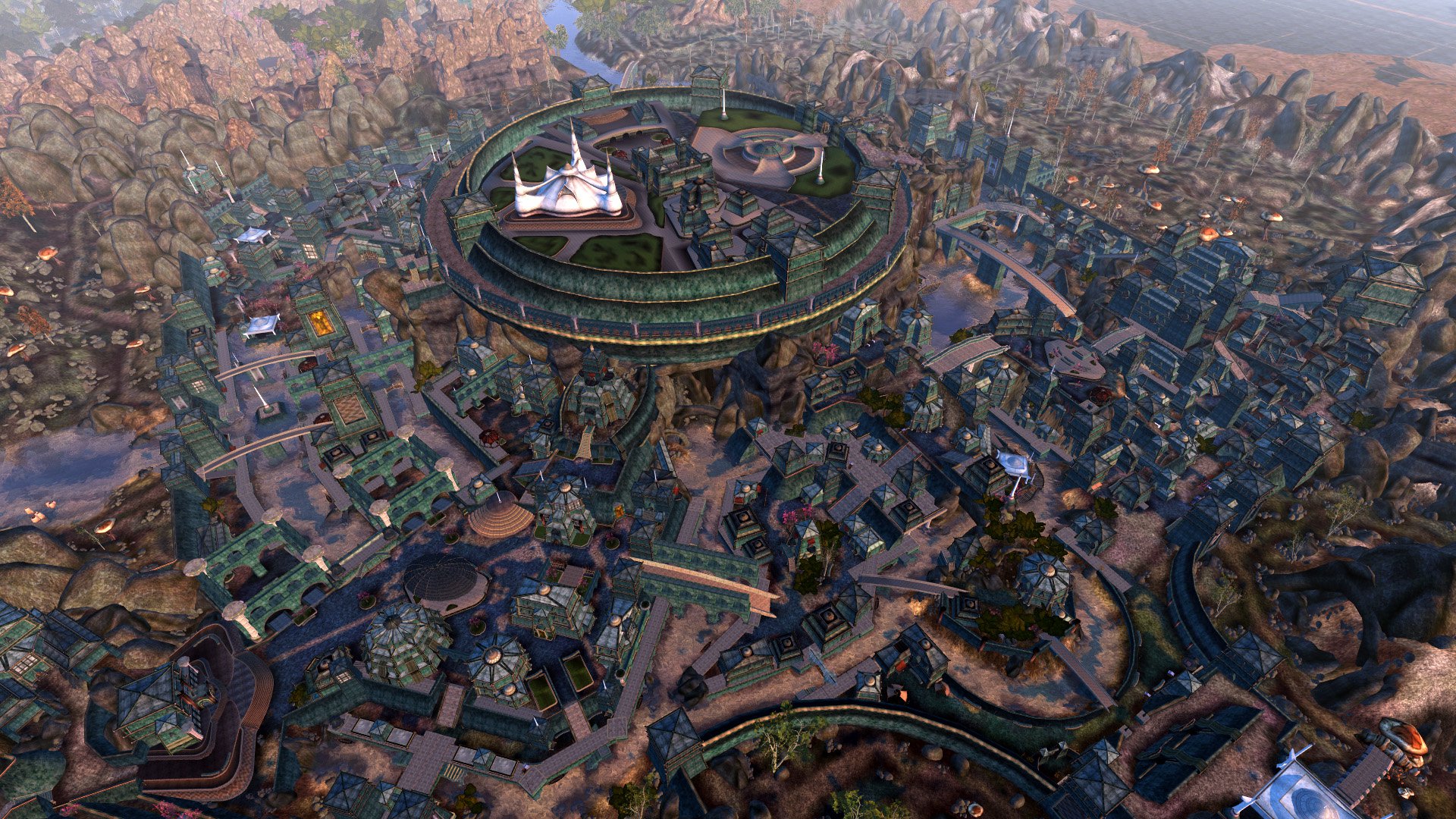
Also, at least one of the people who worked on it was way too into sculpture. Old Almalexia contained, for reasons known only to modders past, 47 imposing and blissfully context-free statues at one point. It wasn't in-keeping with lore, or base Morrowind's aesthetic direction, or—depending on your inclination—good taste. It had to be revised, and between 2011 and 2013, it was. And then, well, the revision had to be revised too. That is if scrapping the entire thing and starting again from scratch, laboriously plotting everything out ahead of time in order to avoid mothballing yet another few years' work, can be called "revision".
"[Atrayonis and Gnomey] took the reins and quite literally saved the project from abandonment, pushing on from sheer will"
Sultan of Rum
It was not a happy task, and many of the project's heads—who had been helming things "for almost a decade by that time"—didn't exactly find their enthusiasm reinvigorated by the experience. Many of them left, but Sultan says "the trouble was, they all independently decided to do that at around the same time," leaving around five people, total, working on TR by early 2016. Thus, the Great Self-Decapitation.
The way Sultan tells it, it was only the intervention of modders Atrayonis and Gnomey, who "took the reins and quite literally saved the project from abandonment, pushing on from sheer will," that pulled the mod from its downward spiral. Well, that and a late-2010s "explosion in the popularity of Morrowind modding". Can't keep a classic down.
Citizens of Tamriel
Being a volunteer project, devs enter and leave TR with stunning regularity. Of the original core team from 2001, not a single developer remains, and many have dropped off the grid entirely. Ender himself last cropped up to give an interview in 2006, but hasn't been heard from in over ten years at this point. Sultan of Rum was able to rattle off a whole list of names—"Moorkh, Kotloth, Noirgrim, Rodan, Valderon, Veet, Majra, Yinnie, Deus, Ben Vagara"—who have long-since receded into myth since TR's conception. "I assume they have families and busy lives and they've most likely forgotten about this videogame hobby they were briefly involved in in their youth, 20 years ago".
But there's a flipside to that. TR senior developer Jackimoff Wackimoff (I love the internet) says the team maintains its enthusiasm with two words: "New people!" Even in 2023, Morrowind modding—and TR specifically—pulls in new blood.
"It rarely gets tedious," says Jack (let's stick with Jack), the "constant influx of new people with new ideas and new techniques means the output of the team is never the same week on week," and the project's "open dev structure" creates an environment where any onlooker, whether they're a dev on the project or not, "can drop in and see what we're up to". That means onlookers can keep tabs on development from afar and, should the desire arise, get involved themselves. That's pretty much Sultan of Rum's story to a tee: Following the mod's progress on Discord "practically in real time" was addictive to their mod-obsessed self, and it wasn't long before they were deep in the project itself. "It was like cocaine to me," they say.
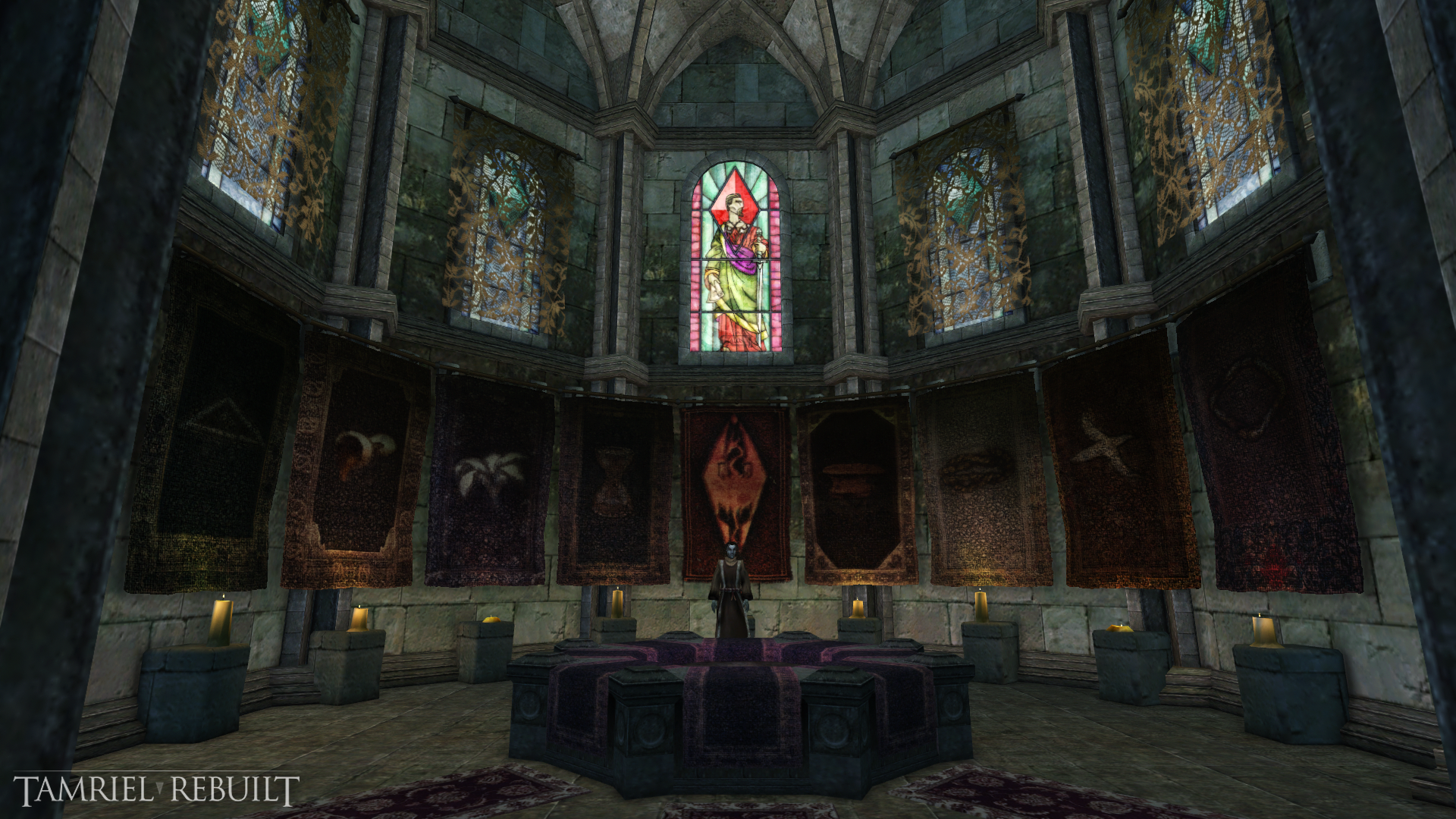
But a perpetual changing of the guard presents problems too. An outflow of old hands can lead to situations in which, as Jack puts it, TR stops passing "The bus test": "If a select few people ever got hit by a bus the project would be toast". On a volunteer project that's old enough to vote and organised online, making sure everything doesn't go up in smoke because a few people with some important keys stop logging into Discord one day is both vital and, sometimes, difficult. The Great Self-Decapitation is proof enough of that.
"If a select few people ever got hit by a bus the project would be toast"
Jack
Plus, there's the fact that content produced in 2005 simply might not meet the criteria of 2023. "Standards do change, the development process gets refined, the writing gets tightened up and we generally create better and better quality output release on release". That can be an issue. "This does create some tension between the new stuff and the old stuff," says Jack, "The simple fact is that some of it really doesn't hold up all that well".
Sultan divides TR's staff into two halves: the "redoists" and the "anti-redoists". The former believe the dated older content gives players who stumble into it a bad first impression of the mod, the latter want to work on new things rather than rehash the old. Right now, TR is focused on new stuff but has a "slower-burning" project to revise old content, but that's just the "current, fragile consensus," says Sultan. Eventually, the team wants to "significantly overhaul all of the parts of Morrowind that we released up to 2013, so about half of all the land in the released mod today". Or roughly 12 years of work and its associated issues.
Those can be issues with old content—base Morrowind handles themes of slavery and imperialism, and working with its framework means juggling those lightning rods, something the mod didn't always do well in the past—but it's also a technical problem. Strange as it is to say, a game from 2002 can still make modern machines sweat.
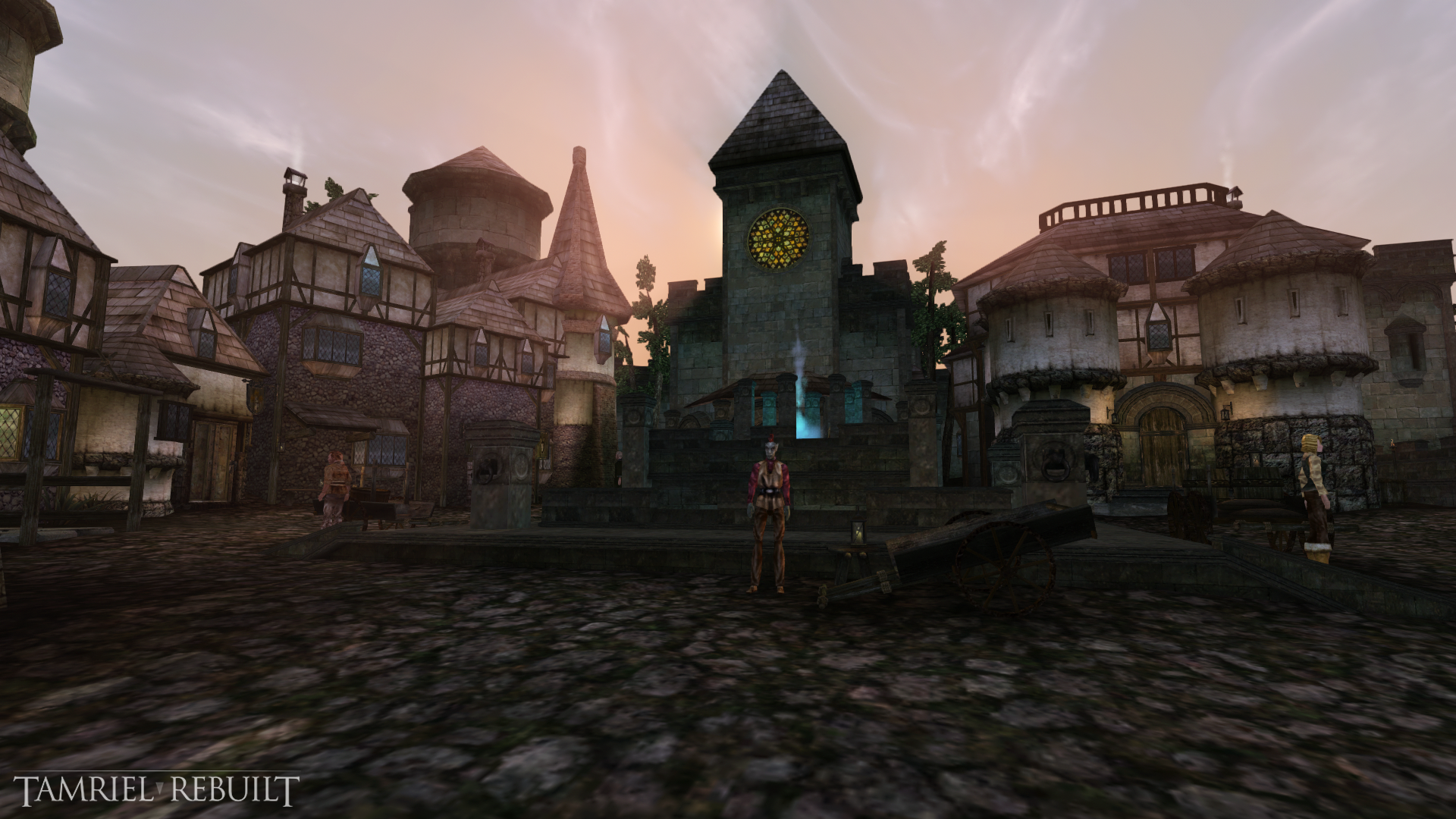
"This does create some tension between the new stuff and the old stuff... The simple fact is that some of it really doesn't hold up all that well"
Jack
"It's really difficult to keep from over-detailing our exterior environments or making things too grand for Morrowind's scale," says Sultan of Rum, "In years past, TR didn't see that as a problem since we couldn't believe that modern machines would struggle running a mod for a game that was released in 2002". But what the team didn't appreciate back then was that not all of today's whizzbang graphical fidelity is down to the raw power of our CPUs and GPUs. There are also "various engine tricks and increasingly clever ways to design and use in-game 3D assets" that "Morrowind has none of," says Sultan of Rum, "hence, even modern systems struggle running [while] using Morrowind mods".
"Every new release is our best one yet," says Jack, "with more refined design philosophies [and] better processes and pipelines… Which is great, but also means each previous release gets further and further behind in quality". Performance issues in old, more rudimentary content stick out more and more with each new release (I imagine even my RTX 4080 might have struggled with old Almalexia's hyperabundant statues), and the proliferation of "some fantastic modellers, texture artists and animators who can output some amazing stuff" can be a stark and unflattering contrast to decades-old work cobbled together from Morrowind's existing textures. It's a push-pull, a vector to generate friction between old devs and new, and another thing TR's leads have to balance if they ever want to actually finish the project. It's hard work, in short.
Telvanni I love them
And yet, miraculously, people keep doing it. They've been doing it for 22 years and, call me cynical or optimistic, I suspect they might have it in them to do it for 22 more. When I asked the team members I spoke to what it was that got them into TR and what it is that keeps them going, they all had their own stories, but one thing kept coming up: Morrowind is an incredible game. Even when things looked shaky in the aftermath of Oblivion's release, when certain segments of the team wandered off to work on that instead, a hardcore clan of Morrowind obsessives remained. Now, through Fallouts 3 and 4, Skyrim, and now Starfield, the passion for Morrowind in particular is still there.

"Somehow, Morrowind fans have stuck with it," says Mark, "there is a certain element of timelessness to the game, despite its decidedly outdated graphics and systems."
Despite the age of the mod and the game it modifies, "We don't have to worry about the newest Elder Scrolls game taking a chunk of Morrowind modders large enough to damage our community," he says. "It's pretty unique."
"There is a certain element of timelessness to the game... we don't have to worry about the newest Elder Scrolls game taking a chunk of Morrowind modders large enough to damage our community"
Mark
"My enthusiasm still stems from the love of the game," says Jack, "Morrowind's world is so beautifully made. It's got this melancholy to it that really sucks you into the vibe and the density of the lore and the world-building is so brilliantly intriguing… The fan base being so dedicated to expanding on that despite all the years is the cherry on top to me. There's not a lot of games like it in that respect."
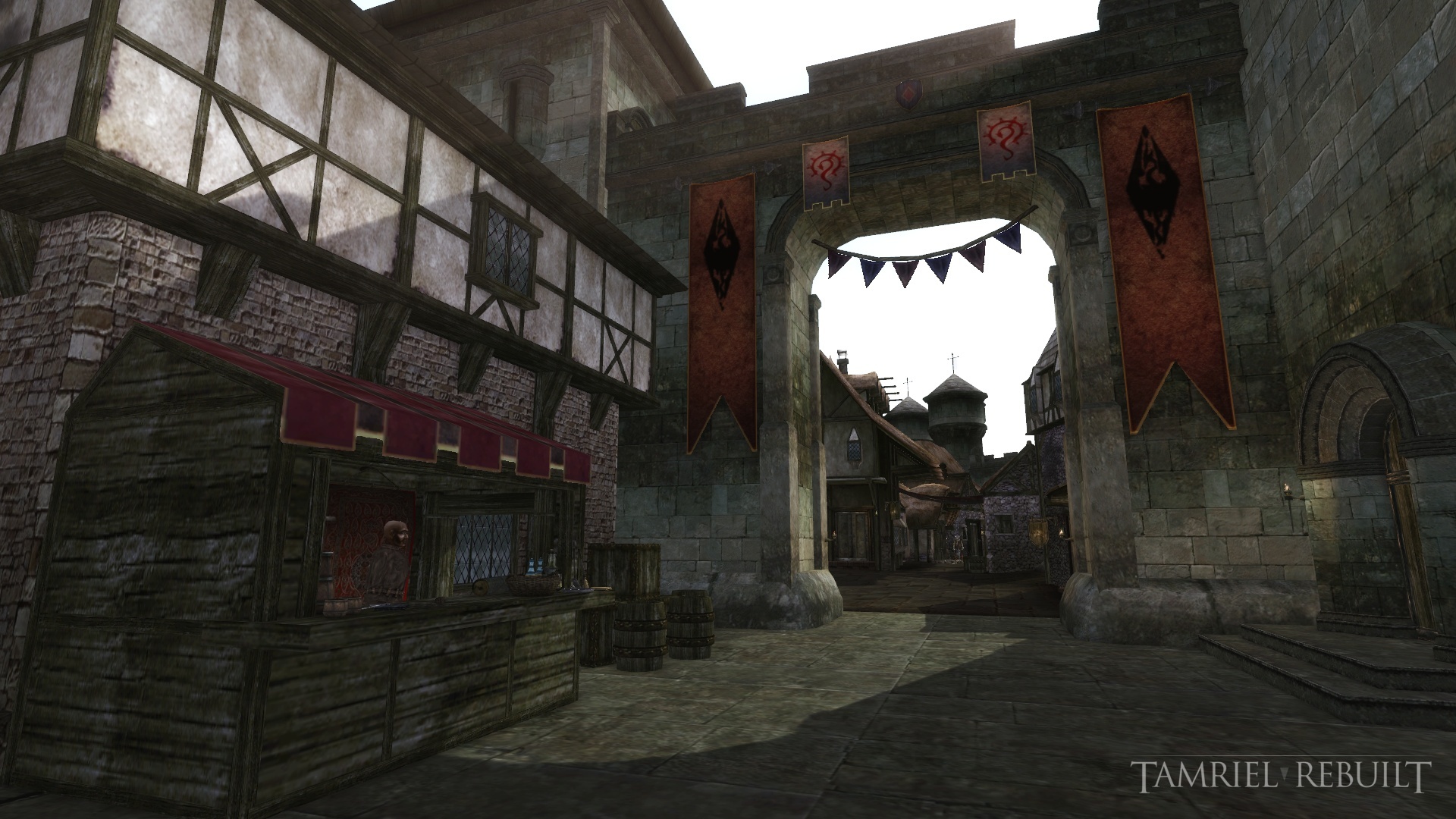
Sultan's the same: "It drew me in with its low system requirements and kept me there with its alien worldbuilding… most Morrowind superfans agree that the Tamriel of TES III is so much more intriguing than what came after". As a Morrowind superfan, and an inveterate sour grape when it comes to Bethesda's later work, I can't help but agree. Bethesda left behind the philosophy that gave birth to Morrowind years and years ago, and I can't blame it. It's worked out very well for the company, after all. But I still love Morrowind, and knowing that there's so much more of it to come—even if it's not from the house that Todd built—is a great feeling. That's why TR and its unlikely continued survival has always held my interest.
"I think that's what's so wonderful about all mod projects," says Jack, "It's simply a collaboration of dozens of people who love the game so much they're willing to pour a huge amount of time and effort into making more of it for people to enjoy for free. It's not profit motivated, it's not done for any ulterior motive at all. Just pure love of the game. The fact that even a game as old as Morrowind still gets a regular influx of people wanting to create for it blows my mind, so I'm always ready to help them learn how to do it."
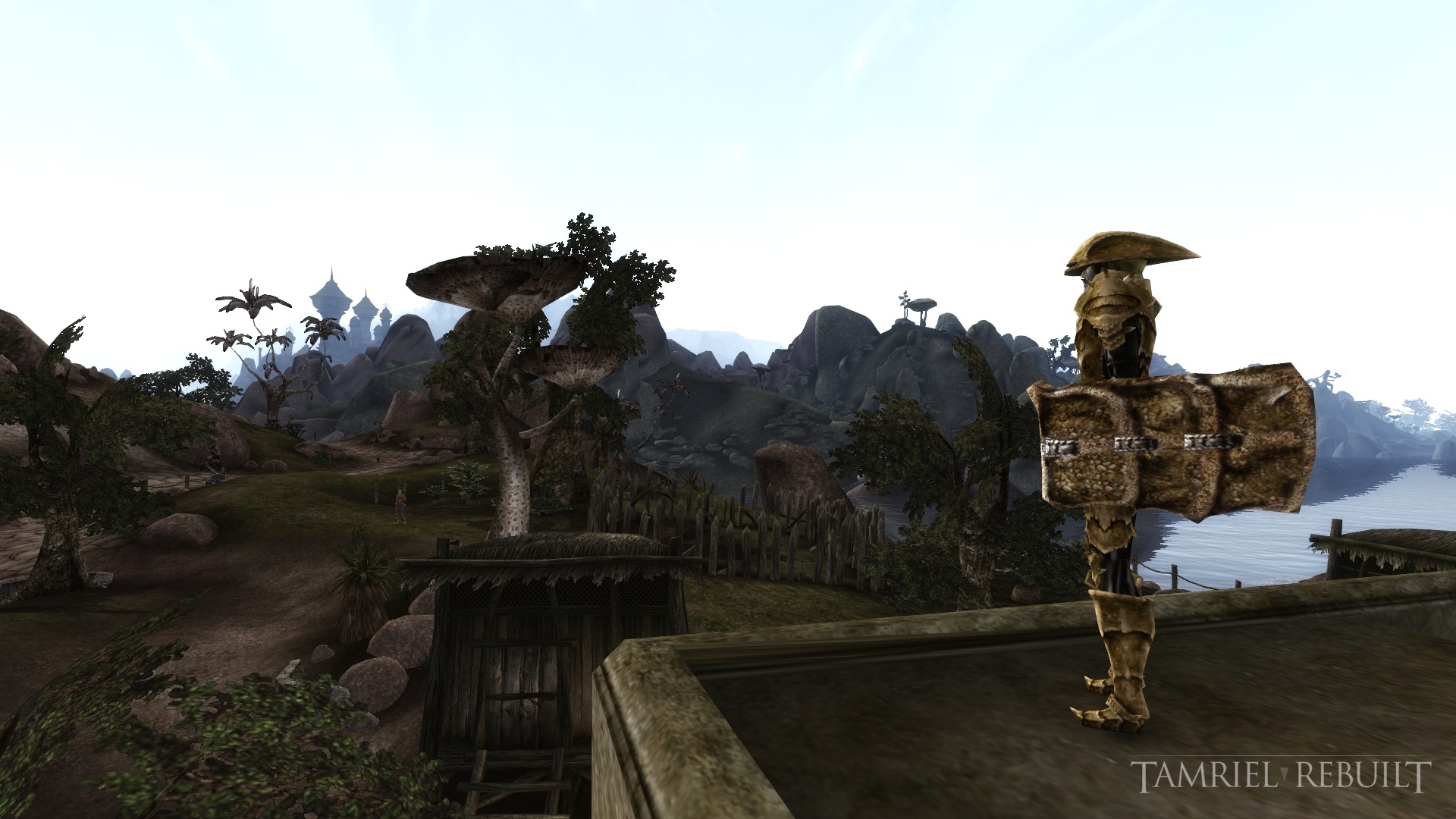
Tamriel Rebuilt's last release was its Dominions of Dust and Embers of Empire expansions in November last year. It currently has a "joke" release date of 2090 and an "optimistic" release date of 2035. Whichever one it is, I'll see you there.

One of Josh's first memories is of playing Quake 2 on the family computer when he was much too young to be doing that, and he's been irreparably game-brained ever since. His writing has been featured in Vice, Fanbyte, and the Financial Times. He'll play pretty much anything, and has written far too much on everything from visual novels to Assassin's Creed. His most profound loves are for CRPGs, immersive sims, and any game whose ambition outstrips its budget. He thinks you're all far too mean about Deus Ex: Invisible War.

